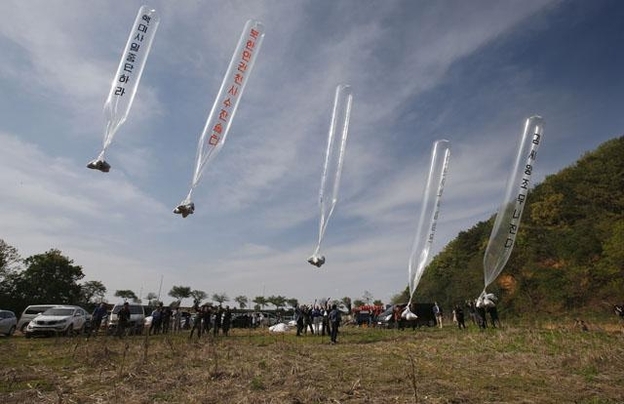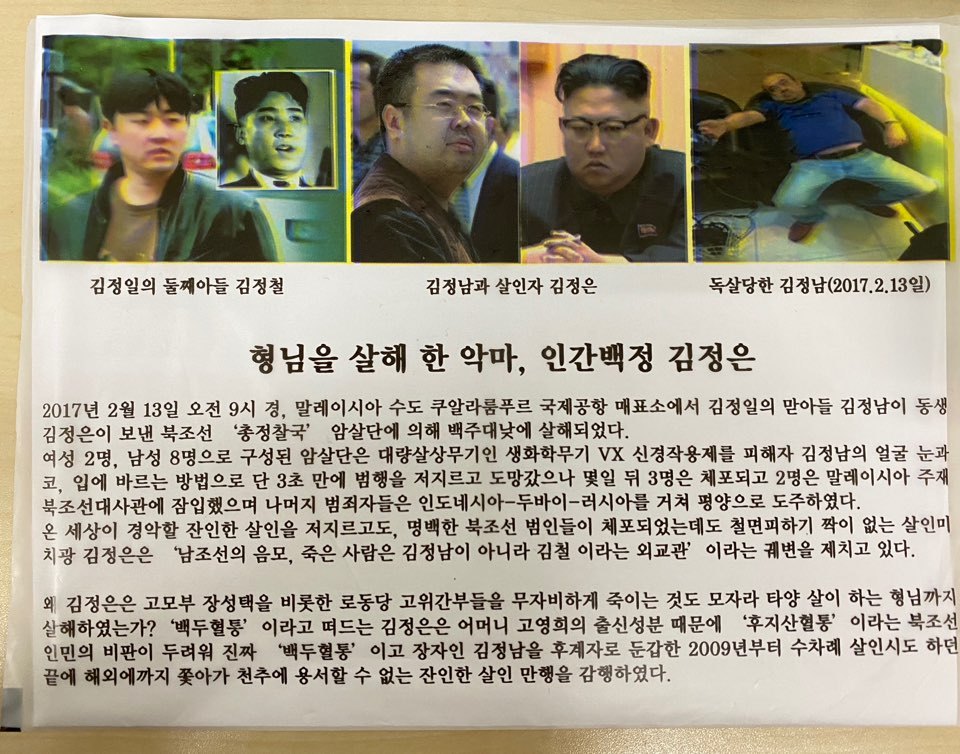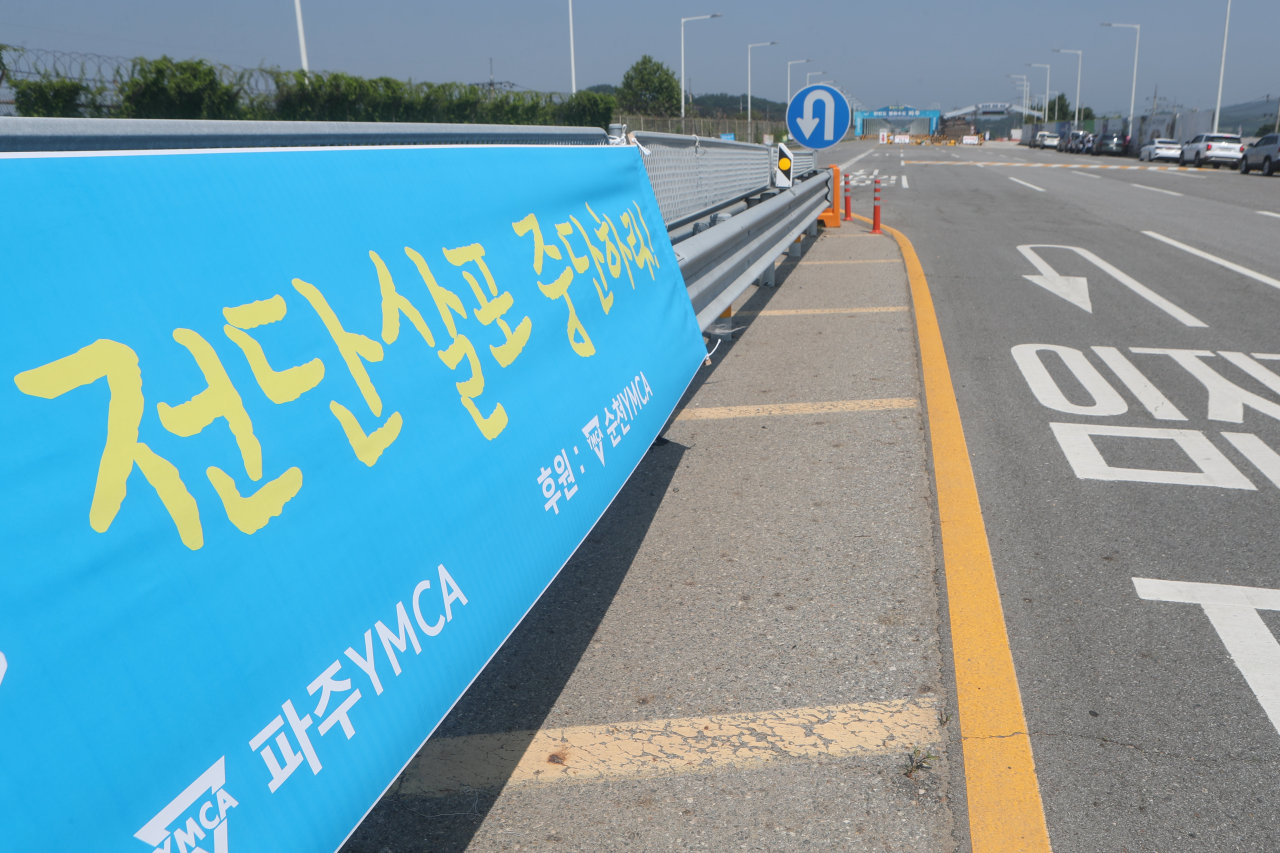Leafleting: decisive propaganda or empty provocation?
By Ahn Sung-miPublished : June 21, 2020 - 16:02

Even in the 21st century with all its technical wizardry and social media, old-fashioned propaganda leaflets seem to matter a great deal on Korean Peninsula, the world’s last remaining Cold War frontier.
The act of flying huge gas-filled balloons carrying leaflets and other materials denouncing the rival regime has lately become the source of sudden ratcheting up of tensions between the two Koreas.
Enraged by defectors here sending anti-North Korea leaflets across the border, Pyongyang last week publicly blew up the inter-Korean liaison office in its border city Kaesong, which served as a de facto embassy between the two Koreas. It warned to take further actions, including sending its own propaganda leaflets across the Southern border.
But questions many still ponder are why Pyongyang is so furious over some leaflets, and whether the materials with pictures and messages criticizing North Korean leader Kim Jong-un can instigate change inside the closed-off state.
Park Sang-hak, North Korean defector who leads Fighters for a Free North Korea, a civic group that have sent anti-Pyongyang leaflets for years, said he was told many accounts of North Korean residents ‘awakened’ after reading the leaflets.
“Defectors who escaped North Korea have told me that they have read the leaflets while back in the North, and it was an ‘awakening moment’ for many of them. They were shocked by the messages contradicting what they learned from the government growing up,” Park told The Korea Herald in a recent interview.
“North Korea is still completely blocked from the external world with little information. That’s why messages dropped from the sky still work to bring about change in the reclusive regime.”
Others view the leaflets are already outdated. They are not the main concern, but simply a pretext for North Korea to raise its ante to gain leverage in its relations with Seoul and Washington.
“North Korean residents are aware of what’s going around in the world and they are more advanced than what we perceive,” said Kim Dong-yup, a professor at Kyungnam University’s Far East Institute in Seoul. “Leaflets don’t threaten the North Korean regime or its people. The North is angry that the defectors are insulting its supreme leadership, but the main motivation is to justify their move to threaten Seoul and launch further military provocation.”
Decades-old practice
Since the Korean War ended in armistice in 1953, leaflets had long been the center of the psychological warfare the two Koreas waged against each other, along with loudspeakers that blared propaganda across the heavily-fortified border.
The government-led leaflets launches, however, had largely stopped since early 2000 during the Kim Dae-jung administration amid its effort to engage Pyongyang with its “Sunshine Policy.”
It was then the civic organizations, mostly run by defectors, Protestants and conservatives, which carried on with the leaflets distribution.
Park’s FFNK is one of the few organizations left that continue to float balloons across the border, even when most of other groups ceased in 2018 when inter-Korean relations made significant headway.
According to data provided by the Unification Ministry, the defector groups have carried out 94 balloon launches in the past 10 years, distributing more than 19 million leaflets. Among them, FFNK conducted more than half, 65 launches.
The group’s latest batch was on May 31, when it released balloons, carrying 500,000 propaganda leaflets, 50 booklets, 2,000 $1 bills and 1,000 SD cards from the border city of Gimpo, Gyeonggi Province.
The content of the leaflets changes from time to time. The latest material accused North Korean leader Kim Jong-un as “hypocrite,” who piled up assets earned by his people’s “blood, toil and sweat” for him and his family when his people are starving. It also calls Kim a “butcher” and “devil” who ordered the assassination of his half-brother Kim Jong-nam.

Also distributed in the bundle with the leaflets were crisp $1 notes –- which Park said would get more North Koreans to pick them up –- and booklets and SD cards containing news and information about prosperous South Korea.
The group is planning to push ahead with sending 1 million leaflets across the border to mark the 70th anniversary of the Korean War, which started June 25, 1950, with messages that tell North Koreans “that it was Kim Il-sung, the grandfather of Kim Jong-un, who invaded the South and started the war that killed 3 million people,” said Park.
Typically, transparent 12-meter long cylindrical helium- or hydrogen-filled balloons, which can travel up to 200 kilometers with a maximum load of 10 kilograms, are used for the launch. Once the balloons travel far enough across the border, a small device is timed to break open the plastic package and scatter the contents like snowflakes. Recently, the FFNK insert GPS devices to track the movement of the balloons.
Leaflets or trash?
Not all of them reach North Korea, and a lot of them end up south of the border, causing a trash problem for residents living in the border area.
Residents living in cities close to the inter-Korean border continue to protest against the leaflet launches, saying the piles of plastics and propaganda materials land in their neighborhoods.
Environmental concerns and safety issues are one of the main reasons why the South Korean government is trying to legislate a ban against the activities, at the cost of discouraging the groups’ “freedom of speech.”
“Most of the leaflets have been discovered in our territory close to the border, causing environmental pollution and increasing the burden on local people to get rid of them,” said Unification Ministry spokesperson Yoh Sang-key.

The defector activist Park, however, refuted such concerns, saying about 70 to 80 percent of leaflets end up in North Korea. And when the materials are reported to land in the South, Park’s group collects them to sends them back to the North in the future, he claimed.
The Unification Ministry also stressed that the leaflets pose safety and security risks for the border town residents, as leaflet launches could heighten military tensions.
In 2014, the two Koreas exchanged fire after the North’s military tried to shoot down the balloons distributed by the defector groups.
Why is North so angry this time?
North Korea is particularly sensitive about personal insults against Kim Jong-un, who is referred to as the “supreme dignity.”
North Korea, in justifying its escalating tension recently, branded leafleting as a hostile act that cannot be tolerated, while deciding to treat the South as an “enemy.”
“They dared to hurt the dignity of our supreme leadership and mock the sacred mental core of all our people. This was a sign of hostility to all our people,” North’s state media Korea Central News Agency said. “As far as the issue of the dignity of our supreme leadership is concerned, there can neither be a pardon nor an opportunity.”
“Just like North Korea clearly stated, the leafletting is a threat to its supreme leadership, who is North Korean people’s life, livelihood and sun, and it’s an act of declaring a war,” said Yang Moo-jin, a professor at the University of North Korean Studies. “We need to find answers in North’s response. Unless South Korea comes up with preventive actions, such as introducing an effective legislation to ban the leafleting, the North will continue to escalate tension.”
Others emphasized that while anti-North Korean leaflets are grave concern, Seoul needs to look beyond the leaflets and what Pyongyang’s intention is.
“The core problem is that the dissatisfaction with the South has accumulated following the ‘no-deal summit’ in Hanoi,” added professor Kim. “The North is trying to find justification to express that frustration, and the leaflets come into the playbook.”
Lee Jung-chul, professor of political science at Soongsil University, echoed the view that the latest tension is a combination of North’s frustration with impasse in US-North Korea relations since the collapse of Hanoi summit last February, coupled with Seoul’s lack of progress in inter-Korean issues.
“If North Korea’s strategy is to deliberately provoke and return to negotiation, it could already be preparing for the next step after this tension,” said Lee. “If (Seoul) fails to manage this inter-Korean tension, North could unveil its ‘Christmas gift,’ which it mentioned last year, by end of this year.
By Ahn Sung-mi (sahn@heraldcorp.com)












![[Today’s K-pop] BTS pop-up event to come to Seoul](http://res.heraldm.com/phpwas/restmb_idxmake.php?idx=644&simg=/content/image/2024/04/17/20240417050734_0.jpg&u=)





![[KH Explains] Hyundai's full hybrid edge to pay off amid slow transition to pure EVs](http://res.heraldm.com/phpwas/restmb_idxmake.php?idx=652&simg=/content/image/2024/04/18/20240418050645_0.jpg&u=20240419100350)

